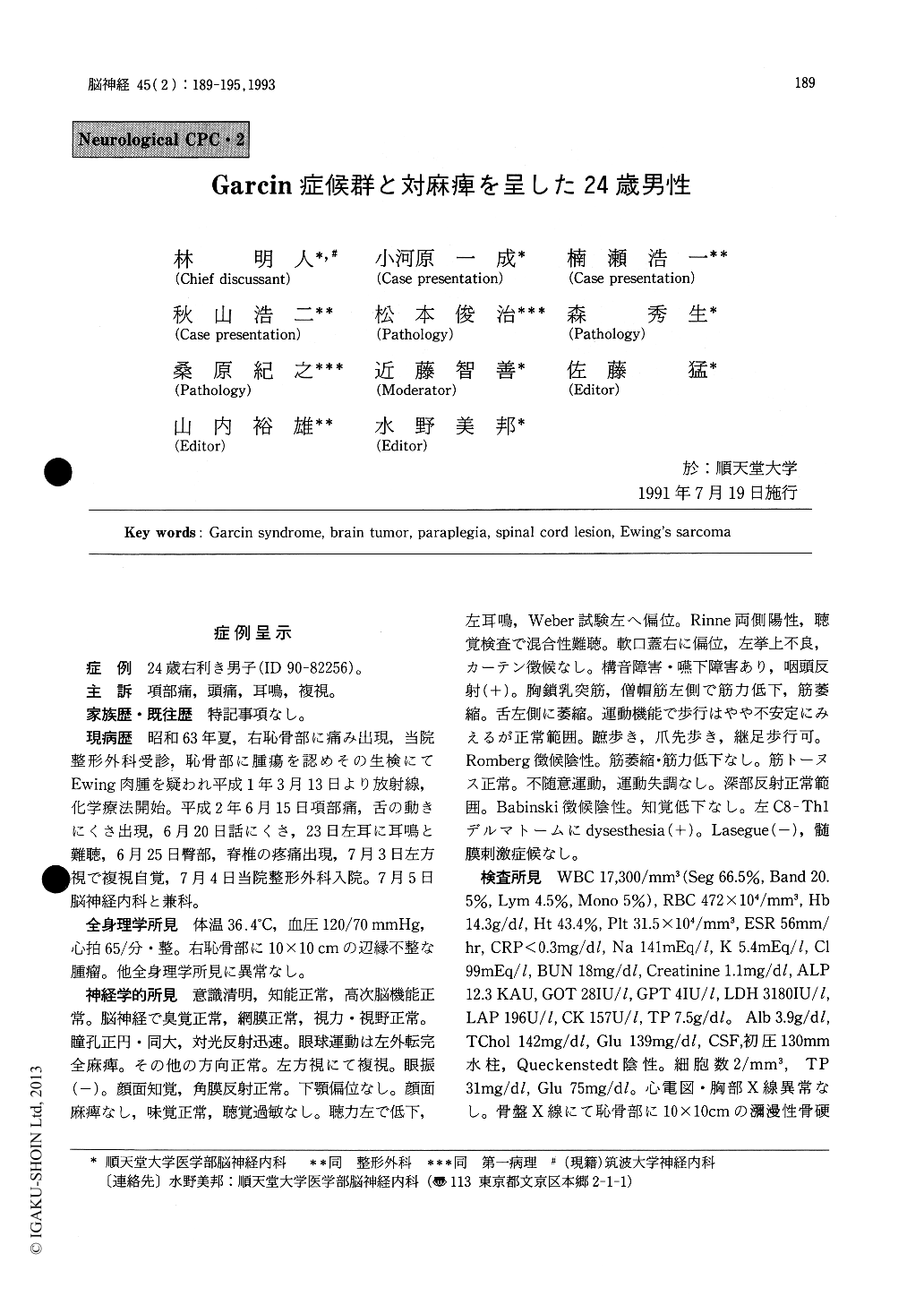Japanese
English
- 有料閲覧
- Abstract 文献概要
- 1ページ目 Look Inside
症例呈示
症例 24歳右利き男子(ID 90=82256)。
主訴 項部痛,頭痛,耳鳴,複視。
We report a 24-year-old man who presented unilateral multiple cranial nerve involvements fol-lowed by progressive paraplegia. The patient expir-ed after developing DIC and pneumonia. Post-mor-tem examination revealed Ewing's sarcoma originated in the pubic bone with extensive metas-tases including the clivus which was responsible for his cranial nerve lesions.
The patient was well until 24 years of age when he noted an onset of pain and a mass in the pubic region. The histology of the biopsy specimen of the tumor suggested Ewing's sarcoma. He was treated with chemotherapy and local radiation. A year after, he noted an onset of nuchal pain, difficulty in tongue movement, dysarthria, deafness in the left ear, and diplopia. On admission to our hospital in July 1990, neurological examination revealed an alert and intelligent Japanese male in no acute distress. The olfactory to the trigeminal nerves appeared intact. He showed complete abducens nerve palsy, facial weakness, mild deafness, and weakness of the soft palate, the sternocleidomastoid muscle and the tongue, all on the left side. The remainder of the neurological examination was unremarkable except for dysesthesia along the left 1C8 and Thl dermatoms.
Radiological examination revealed a 10×10 cm sclerotic mass in the pubic bone and a high signal mass lesion between the clivus and the pons in theT2-weighted MRI. His clinical course was compli-cated by acute paraplegia with anesthesia below the Th4 dermatom, DIC, and respiratory distress due to plural effusion.
Post-mortem examination revealed a necrotic and hemorrhagic tumor in the pubic bone. The histology was consistent with Ewing's sarcoma. Metastases were found in ribs, spines, the skull, both lungs, and pancreas. Most of the clivus was replace by the tumor tissue which showed extraosseous growth towards pons as revealed by MRI. The fourth thoracic cord and the adjacent area were completely necrotic, but no direct compression was seen. This necrosis was thought to be caused by circulatory disturbance, particularly of venous drainage of the spinal cord as extensive metastases were found in the adjacent spines and the surround-ing tissues. False diagnosis of subacute necrotic myelitis due to the remote effect of malignancy might have made unless postmortem examination was performed.

Copyright © 1993, Igaku-Shoin Ltd. All rights reserved.


